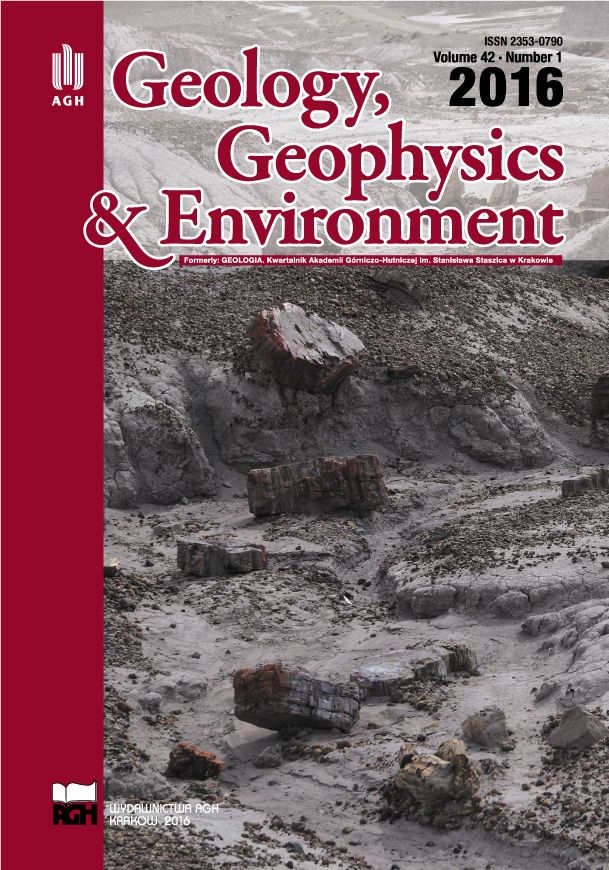Analysis of the trace fossil finds from Paleogene formations of the Central Western Carpathian (Orava region).
DOI:
https://doi.org/10.7494/geol.2016.42.1.126Keywords:
trace fossils, Central Carpathian Paleogene Basin, SlovakiaAbstract
Up to now only little attention was dedicated to the study of the trace fossils in the development of the Central Carpathian Paleogene Basin in the Orava region. Occasional trace fossils findings from the Central Carpathian Paleogene formations in the Orava and others regions were referred by Plička (1987). Other specialized works on trace fossils from these formations from the Orava region were not published. Study of trace fossils is strongly resulted from absence of well exposed outcrops in the higher parts of Paleogene sequences. The best exposed outcrops are situated in the basal parts of the Paleogene sequence - the Borové Formation. This preliminary study shows a relatively rich diversity of trace fossils associations across the Central Carpathian Paleogene Basin.
We present new finds of trace fossils, within which we have classified 7 ichnogenera, 11 ichnospecies and 2 types of trace fossils, which were not closely systematically classified. Many trace fossils identified in the Orava region are typical of some palaeoenvironment, which are characterized by a specific lithology, nature of the substrate, dynamics of the environment, amount of nutrients, or stability or fluctuations of oxygen in the bottom waters. The trace fossils assemblages reflect changes of depositional systems during the tectonic and sequence stratigraphic development of the basin. Early Eocene shallow-sea environment of the Borové Formation in the range of rocky coast, sandy dynamic littoral zone, up to the transitional zone and the internal shelf are characterized by findings of traces of Entobia, Gastrochaenolites, Nummipera, Ophiomorpha and Skolithos. On the contrary, a significant deepening of the deposition environment during the Oligocene, documented by turbidite sedimentation of Zuberec and Biely Potok formations is characterised by findings of graphoglyptids (Spirorhaphe, Nereites, Paleodiction, Protopaleodictyon, Megagrapton) or traces of deposit feeders (Arthrophycus, Chondrites, Planolites, Phycodes, Scolicia, Zoophycos).
Downloads
References
Plička M., 1987. Fossil Traces in the Inner-Carpathian Paleogene of Slovakia, Czechoslovakia. Západné Karpaty, séria paleontológia 12, 125–196.
Downloads
Published
Issue
Section
License
Authors have full copyright and property rights to their work. Their copyrights to store the work, duplicate it in printing (as well as in the form of a digital CD recording), to make it available in the digital form, on the Internet and putting into circulation multiplied copies of the work worldwide are unlimited.
The content of the journal is freely available according to the Creative Commons License Attribution 4.0 International (CC BY 4.0)










